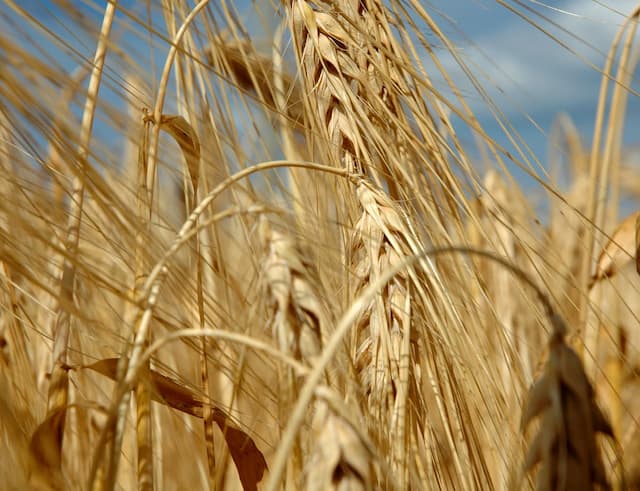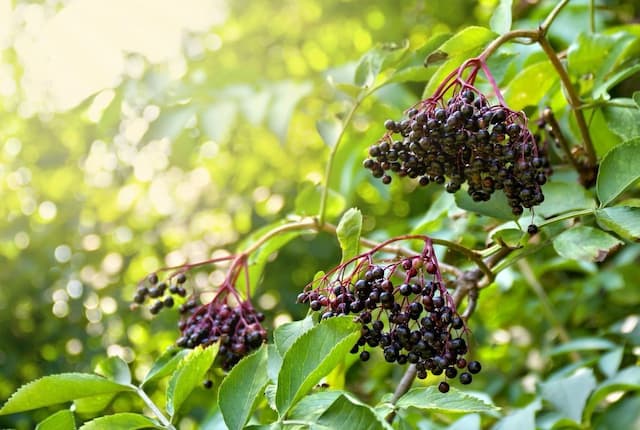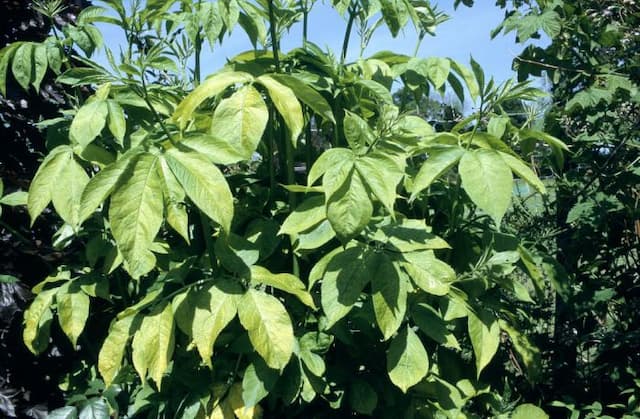Laurustinus Viburnum tinus 'Lisarose' (PBR)

ABOUT
The Viburnum tinus 'Lisarose', commonly known as Laurustinus, is a striking ornamental plant. Its appearance is characterized by a dense and bushy habit that showcases glossy, evergreen leaves with a deep green color. These leaves create a lush backdrop for the plant's seasonal displays. During late winter and into spring, Laurustinus 'Lisarose' becomes particularly attractive due to its bloom of small, star-shaped flowers. These blossoms are gathered in spherical clusters, called corymbs, and have a pinkish hue when in bud, opening to reveal delicate white petals. As the flowers fade, the plant produces metallic blue-black berries, which add further interest to the overall display. This berry display can also attract birds and wildlife, which find them appealing. The Viburnum tinus 'Lisarose' adds a touch of elegance to any garden setting through its year-round beauty and colorful seasonal changes.
About this plant
 Names
NamesFamily
Adoxaceae.
Synonyms
Laurustinus, Spring Bouquet, Lisa Rose Viburnum.
Common names
Viburnum tinus 'Lisarose' (PBR)
 Toxicity
ToxicityTo humans
The common name of Viburnum tinus 'Lisarose' (PBR) is Laurustinus. Laurustinus is considered mildly toxic to humans if ingested. The toxicity is due to the presence of certain compounds in the leaves and berries. Although severe poisoning is rare, symptoms from ingesting parts of the plant might include abdominal pain, nausea, vomiting, and diarrhea. In particular, the berries are known to be more harmful than the leaves. It is advisable to seek medical attention if significant quantities of the plant are consumed or if symptoms of poisoning occur.
To pets
Laurustinus is also considered mildly toxic to pets, including dogs and cats, if ingested. The level of toxicity is generally low, but it can cause gastrointestinal upset in animals, similar to humans. Symptoms of toxicity in pets might include vomiting, diarrhea, and abdominal pain. Berries tend to be more toxic than the foliage. If a pet ingests a considerable amount of Laurustinus, it is recommended to contact a veterinarian to assess the need for medical treatment.
 Characteristics
CharacteristicsLife cycle
Perennials
Foliage type
Evergreen
Color of leaves
Dark green
Flower color
Pink
Height
6-12 feet (1.8-3.7 meters)
Spread
6-12 feet (1.8-3.7 meters)
Plant type
Shrub
Hardiness zones
7-10
Native area
Mediterranean
Benefits
 General Benefits
General Benefits- Year-Round Interest: Viburnum tinus 'Lisarose' offers visual interest throughout the year with its flowers, foliage, and berries.
- Attractive Flowers: This plant features pink buds that open to white blooms, providing a beautiful contrast and early spring color.
- Dense Foliage: The dense, evergreen foliage creates privacy and works well as a hedge or screen.
- Low Maintenance: Requires minimal pruning and care once established, which is ideal for those looking for easy-to-care-for garden plants.
- Drought Tolerance: Once established, it can tolerate periods of drought, reducing the need for frequent watering.
- Berries for Wildlife: Produces bluish-black berries that are popular with birds and other wildlife, supporting biodiversity in the garden.
- Hardy Plant: It is relatively hardy and can withstand a variety of climates and conditions, making it suitable for many gardens.
- Versatile Landscaping: Can be used in various landscaping projects, such as foundation plantings, hedges, or as a specimen plant.
 Medical Properties
Medical Properties- This plant is not used for medical purposes.
 Air-purifying Qualities
Air-purifying QualitiesThis plant is not specifically known for air purifying qualities.
 Other Uses
Other Uses- Privacy Screening: The dense foliage of Viburnum tinus 'Lisarose' makes it suitable for creating a privacy screen in residential gardens.
- Noise Reduction: When planted as a hedge, it can help to reduce ambient noise pollution in urban areas.
- Topiary: Due to its robust nature and ease of pruning, it can be shaped into various topiary forms for ornamental purposes.
- Windbreak: Its thick and bushy growth habit can serve as a windbreak, protecting more delicate plants.
- Erosion Control: It can be used on slopes and banks to help prevent soil erosion due to its root system.
- Wildlife Shelter: The dense branches provide shelter and nesting sites for birds and other wildlife.
- Photography Background: Its attractive foliage and flowers can provide a picturesque background for outdoor photography.
- Educational Tool: Used in schools or educational programs to teach pruning techniques and plant life-cycle.
- Seasonal Decoration: The bright berries and foliage can be used to make natural decorations during the holiday season.
- Theatrical Scenery: Branches and foliage can be used in theater productions to create natural-looking stage environments.
Interesting Facts
 Feng Shui
Feng ShuiThe Laurustinus is not used in Feng Shui practice.
 Zodiac Sign Compitability
Zodiac Sign CompitabilityThe Laurustinus is not used in astrology practice.
 Plant Symbolism
Plant Symbolism- Renewal: Viburnum tinus, commonly known as laurustinus, often blooms during late winter to early spring, symbolizing new beginnings and the renewal of life.
- Protection: With its dense growth and evergreen leaves, laurustinus can represent safety and shelter, offering protection to smaller wildlife in gardens.
- Persistence: As a hardy shrub that withstands various conditions, laurustinus represents resilience and the ability to persist through challenges.
- Abundance: The plentiful flowers and berries of laurustinus symbolize abundance and generosity, reflecting nature's bountiful gifts.
 Water
WaterThe Laurustinus 'Lisarose' prefers consistently moist soil, so it should be watered deeply once a week, applying about 1 gallon of water per square foot around the base of the plant to ensure the root zone is reached. During hot, dry periods, the frequency may need to increase to twice a week, while in cooler, wetter conditions, you can reduce watering accordingly. It's crucial to avoid waterlogging by ensuring good drainage and to let the topsoil dry slightly between watering sessions to prevent root rot.
 Light
LightLaurustinus 'Lisarose' thrives best in full sun to partial shade. The ideal location would be where the plant receives at least four to six hours of direct sunlight per day, supplemented with partial shade during the hottest part of the day. Avoid deep shade, as this can lead to reduced flowering and a less vigorous plant.
 Temperature
TemperatureLaurustinus 'Lisarose' is hardy and can tolerate temperatures as low as 20°F, though frost may damage flower buds. Optimal growing conditions are in regions where the temperature ranges between 50°F and 80°F. It is crucial to protect the plant from extreme temperature fluctuations and prolonged exposure to subfreezing weather.
 Pruning
PruningLaurustinus 'Lisarose' should be pruned to maintain shape and encourage bushier growth, usually done after the plant has finished flowering in late spring. Light pruning to remove dead or diseased branches can be done anytime. Pruning every year or two is sufficient, cutting back up to one-third of the oldest stems to promote new growth.
 Cleaning
CleaningAs needed
 Soil
SoilLaurustinus 'Lisarose' thrives in moderately fertile, well-drained soil with a pH of 5.5 to 6.5. A mix of two parts loam, one part peat, and one part sand or perlite creates an ideal growing medium for this shrub.
 Repotting
RepottingLaurustinus 'Lisarose' should be repotted every 3-5 years or when it has outgrown its current container.
 Humidity & Misting
Humidity & MistingLaurustinus 'Lisarose' prefers moderate humidity levels, but it is quite adaptable and can tolerate the humidity levels typically found in temperate climates.
 Suitable locations
Suitable locationsIndoor
Place in bright, indirect light; water when top soil is dry.
Outdoor
Plant in well-drained soil; full sun to partial shade.
Hardiness zone
7-9 USDA.
 Life cycle
Life cycleViburnum tinus 'Lisarose' (PBR), commonly known as Laurustinus 'Lisarose', begins its life cycle with seed germination, which often occurs in warm, moist soil conditions. The seedlings emerge and grow into juvenile plants, gradually establishing a root system and foliage. As the plant matures, it enters the vegetative stage, during which it develops a bushy structure, with broad, evergreen leaves. This is followed by the flowering stage, where the plant produces clusters of pink-tinged white flowers, typically in late winter to spring. After pollination, these flowers give way to small, blue-black berries during the fruiting stage. As an evergreen shrub, Laurustinus 'Lisarose' can live for many years, going through repeated cycles of flowering and fruiting.
 Propogation
PropogationPropogation time
Spring-Early Summer
Propogation: The Viburnum tinus 'Lisarose', commonly known as Laurustinus, can be propagated most effectively using softwood cuttings. This method is best carried out during late spring to early summer when new growth is green and flexible. To propagate with this method, a gardener would select a healthy, non-flowering stem and make a cutting of about 4 to 6 inches (10 to 15 centimeters) long. The lower leaves should be removed, and the base of the cutting may be dipped into a rooting hormone to encourage root development before planting it in a pot containing a mixture of peat and perlite. The pot should then be placed in a warm environment with indirect light and covered with a plastic bag to retain humidity until the cutting has rooted, which can typically take a few weeks.




![Elder [Black Tower]](/_next/image?url=https%3A%2F%2Fplants-admin.emdemapps.com%2Fimages%2Fplants%2F%2Fimages%2F604b5cad99578.png&w=640&q=75)




